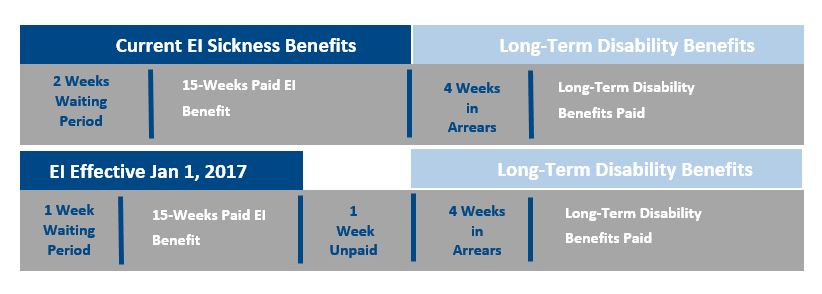UPDATE: Changes to Employment Insurance (EI) Waiting Period Begin January 1, 2017
The 2016 Federal Budget introduced significant changes to Employment Insurance eligibility and benefits in response to fluctuating unemployment rates. Most notably, the waiting period for EI benefits, including sickness benefits, has changed from 2-weeks (14 days) to 1-week (7 days). The benefit payment period remains unchanged at 15-weeks of paid benefit.
Impact to Employers of the new EI Waiting Period
If you are an employer who currently coordinates EI sickness benefits with a Long-Term Disability (LTD) plan, employees will now experience a 1-week gap before their LTD benefits commence. LTD benefits are always paid 4-weeks or one month in arrears.
As a consequence, employers will have to weigh their options in an effort to achieve the right balance between cost and financial hardship…how will an additional week’s delay impact on a disabled employee? Employer options are:
- to leave things the way they are and educate employees about the 5-week versus 4- week gap before LTD benefits commence; or
- to shorten the elimination period for LTD benefits from 119 to 112 days to dovetail with EI sickness benefits. Insurers are requiring LTD premium adjustments in the range of 1.5% to 5% to accommodate the shorter LTD elimination period.
Impact to Employers with a registered Employment Insurance Premium Reduction Program
For employers with a plan that is registered with the Employment Insurance Premium Reduction Program, you will require a 1-week (7 days) waiting period to ensure compliance and qualification. Although the new waiting period comes into effect January 1, 2017, the Government has proposed a 4-year transitional period.
Please click here for the Government of Canada’s December 21, 2016 News Release and Backgrounder on the changes to the EI waiting period.


